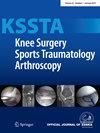Improved outcomes of proximal hamstring avulsion surgery in patients both under and over 50 years, with greater gains in the younger group: A matched comparative study of the PHAS cohort
Abstract
Purpose
To evaluate the functional outcomes of surgical treatment for proximal hamstring avulsion injuries in patients aged over 50 years and to compare the results across another matched group of patients under 50.
Methods
This was a retrospective analysis of prospectively collected data in a matched case-control design targeting patients with proximal hamstring avulsion injuries who underwent surgical treatment at a sports surgery referral centre. Patients over 50 years with complete avulsion or partial injury (>2 cm retraction) were included. Two age groups were formed (18–50 and over 50), matched by the following variables: gender, rupture type (complete or partial), injury chronicity (chronic: more than 4 weeks from the injury or acute) and the preinjury Tegner score. The primary outcome was the Parisian Hamstring Avulsion Score (PHAS), with secondary outcomes, including the Tegner Activity Scale, University of California, Los Angeles (scale) (UCLA) scale, return to sport and complication rates.
Results
The study included 298 patients, with a mean age of 41.8 (7.2) years for the younger group and 58.0 (5.7) years for the older group. The follow-up duration in the younger group, 4.7 years (3.2), was slightly longer than that of the older group, 4.1 years (2.5), (p < 0.001). At the last follow-up, significant improvements were observed in PHAS, UCLA and Tegner scores in both groups (p < 0.001) compared to preoperative scores. The differential gain was higher in the younger group in all three scores (p < 0.05). The rerupture rate was 8.1% in the younger group and 4.7% in the older group (p > 0.05), with no significant differences in complication and return to sports rates (p > 0.05).
Conclusion
This study shows that surgical treatment of proximal hamstring avulsion injuries is associated with significant improvements in functional outcomes in both younger and older patients, with greater magnitude of improvements in younger patients. Complication rates were similar between the age groups.
Level of Evidence
Level III, Cohort Study.

 求助内容:
求助内容: 应助结果提醒方式:
应助结果提醒方式:


